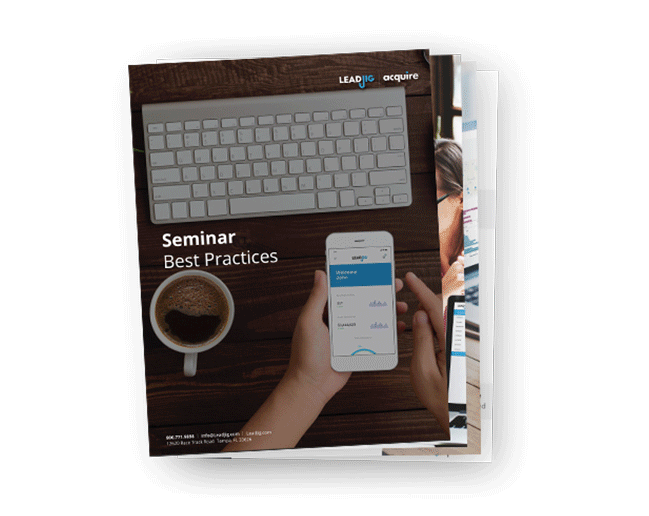How to Develop a Marketing Plan
If you intend to grow your business successfully, you need to know how to make a marketing plan. By carefully following your marketing plan steps, you’ll be able to:
- Determine your target market
- Work out how best to communicate with them
- Execute marketing strategies that help to entice and retain customers
An efficient marketing plan can work as a roadmap to continuous improvement for your organization. Luckily, we’ve created a marketing plan template that will help fast track your business to success.
This post will provide our free marketing plan template and offer best practice advice around marketing strategy and execution.
How to Create a Marketing Plan
While most savvy entrepreneurs understand the importance of a business plan, some fail to realize that a marketing plan is equally relevant. Following a robust marketing plan template, your marketing strategy can focus on acquiring and retaining customers.
There are five steps to creating a marketing plan:
Conduct a situational analysis of your business
A situational analysis is a detailed overview of your company’s strengths, weaknesses, opportunities, and threats (SWOT).
Strengths and weaknesses are characteristics that are present inside your business, whereas opportunities and threats arise from outside factors. When considering your company’s strengths, look at how your products or services are superior to those of your competition. Some of your weaknesses may include inexperienced staff or changes in the current market.
Opportunities may include acquisitions of competitors or new product lines. Threats could consist of further disruption from COVID-19 or a decrease in demand for a seasonal product.
Define your target audience
Develop a one-paragraph profile of your ideal customer. For B2C businesses, describe your prospect by demographics such as sex, age, location, earnings, and lifestyle. For B2B companies, you can define your target market based on job title, business type, location, or any other characteristics that define your best prospects.
List all of your marketing goals
What do you want your marketing efforts to achieve? For instance, are you trying to increase brand awareness or loyalty? Would you like to see a 50% increase in sales over the holidays? Are you hoping to leverage social media marketing by connecting with influencers?
By clearly defining your goals, you can create a focused, detailed marketing strategy.
Choose your marketing tactics
In this section of your marketing plan, you’ll outline your primary marketing strategies. To identify the platforms you’ll use as vehicles for your marketing messages, you’ll need to identify where your ideal customers look for information.
If they have a heavy presence on Twitter, you need to start tweeting. If they’re mom-bloggers, you need to start engaging with influencers in this industry. If you’re reaching out to cold prospects, an email marketing campaign combined with digital assets such as whitepapers or eBooks might be your best marketing solution.
Whatever tactics and platforms you choose to employ must reflect your audience’s habits and personality.
Determine your marketing budget
A percentage of your gross sales should be devoted to your marketing efforts. Although this can be difficult when starting a business, funding opportunities may be available to help finance your initial marketing efforts.
Remember, marketing is paramount to the success of your business. In many cases, if you follow a strategic marketing plan template, your marketing efforts will become an asset to your company.
The Importance of a Marketing Plan
A marketing plan is a perfect link between strategic goals and results. Marketing is the glue that binds together all of your future plans, making sure that the right kind of channels are being used, at the right time, connecting with the right people.
If you’ve already tried multiple marketing channels with little success, it’s probably due to inefficient planning and a lack of a thorough marketing strategy template. Additionally, if your marketing ideas are archaic, redundant, or conflicting with your branding or overall message, you must spend some time developing a cohesive marketing strategy.
Once you have a business plan, marketing strategy, and marketing plan in place, great things start to happen. All of the marketing activities your team performs daily will begin to synergize and deliver significant returns on investment as your business develops.
Marketing Plan Template
This marketing plan template is free to use, adapt, and share with other businesses in your network. When you create a marketing plan, we recommend including the following sections as a template:
1. Business Information –
Where are you based? What is your mission statement? Which team members make up your marketing team
2. Goals –
What do you want to achieve and how?
3. Competitor Analysis –
How are your competitors currently marketing themselves? Are they successful in their marketing efforts?
4. SWOT Analysis –
What are your strengths, weaknesses, opportunities, and threats?
5. Target Market –
To whom will you be marketing your product or services?
6. Buying Habits –
When, where, and how do your ideal customers purchase their products and services? Are they brick and mortar shoppers? Do they spend their time scrolling through eCommerce websites to complete their shopping?
7. Unique Selling Proposition (USP) –
What makes you different from your competitors? What strengths give you a competitive advantage over similar companies?
8. Brand –
How is your brand currently perceived and how would you like your image to be perceived?
9. Website –
List the ways your website could be improved. You may want to consider conversion rate optimization (CRO).
10. Marketing Channels –
How will you use the following channels to achieve your marketing goals?
- Social media marketing
- Content marketing
- Email marketing
11. Search Engine Optimization (SEO)
How can you incorporate an SEO strategy to make sure you rank on popular search engines like Google.com?
12. Measurements and Key Performance Indicators (KPIs)
How will you track the efficiency of your marketing plan?
13. Marketing Strategy and Tactics
Write a recap of your strategy in the form of a brief synopsis. Try to include 4-5 actionable initiatives.
Why Use A Marketing Plan Template?
Marketing plan templates provide a backbone for all your market research and marketing activities. A thorough marketing strategy template will also give you accountability and access to KPIs to rate the effectiveness of your overall marketing campaigns.
Marketing experts create marketing plan templates. Therefore, if you follow their steps carefully, you’ll create a robust strategy that helps you to achieve your business goals. Additionally, they can help you to gain a competitive advantage in your given industry.
Advantages of Creating a Marketing Plan
Creating a marketing plan can help you to:
- Identify your ideal customer and understand how your products or services meet their needs.
- Identify your competitors and look at how they interact with your target customers. You can also evaluate the strengths and weaknesses of your competitors.
- Position your brand, services, or products so that your target market values them above anything your competitors are offering.
- Create specific, measurable goals and time frames for all marketing activities.
- Outline a strategy to reach your target audience, including all channels, messages, and tools you will use.
LeadJig uses intelligent data and industry-leading technology to deliver real marketing results for thousands of advisors and marketing managers worldwide. We can help you build a robust and effective financial marketing plan so you can reach your audience and boost your revenue today. Contact us today to schedule a free demo!





